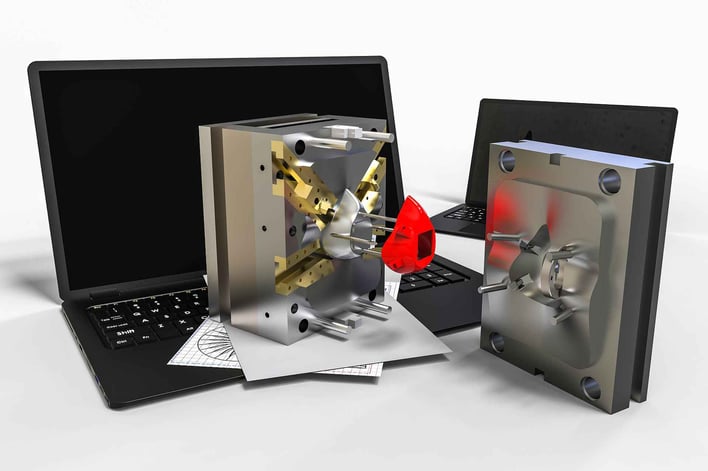
Optimizing product design is crucial to the success of any custom injection molding project. However, when it comes to molding small parts and miniature components, there are some specific design considerations to keep in mind.
Part of the AIM Processing process is design for manufacturability (DFM) – taking your initial product designs and ensuring that no part features will pose an issue once the plastic meets the mold. By carefully considering all design features and tolerances alongside critical injection molding considerations like draft angle and material selection, we minimize manufacturing errors while ensuring a more efficient production process.
Let’s take a closer look at some of the critical design considerations you should make when it comes to small part injection molding.
Meeting the Special Design Challenges in Small Part Injection Molding:
Choosing the Right Injection Molding Plastic Material
It all starts with material selection. You have to choose the right material to meet the performance and environmental requirements for your custom small parts. For example, some materials withstand chemical exposure better than others, but many of those materials are less dimensionally stable. If your part will be exposed to the outdoors, UV resistance and performance to warm or cold temperatures may become important. There is a reason that there are many different types of plastic resin: each plastic resin selection involves trade-offs.Of course, manufacturing your small parts must be economical as well. That’s why AIM works closely alongside our customers keeping the overall project in mind. We’ll help you choose the best thermoplastic material for your specific products, volume requirements, and cost targets.
Proper Wall Thickness
Maintaining proper wall thickness is important for pretty much all injection molded products, but especially in the case of small parts. When you’re dealing with smaller dimensions, you increase the risk of brittleness in the end product.To create the highest-strength small parts possible, we try to maintain uniform wall thickness with a careful cooling process to minimize any warping or sink marks. Thinner walls can cool faster, which can lead to shorter cycle times, but we have to optimize the part design to ensure we achieve proper strength.
Different resin grades have different suggested nominal wall thicknesses. Thicker walls don’t always lead to stronger parts, and the potential for defects such as sink are introduced. Working from the nominal wall thickness, there are guidelines for other supporting features such as ribs, bosses, and filets.
Keep Part Geometry as Simple as Possible
Designing small parts with simple and straightforward geometries to facilitate more consistent, repeatable molding and part ejection processes is strongly desired. Avoid sharp corners or overly complex features that make it challenging for plastic to fill the mold properly, which typically increases the risk of part defects because of stress concentrations. Furthermore, the more connections and seams on a molded part create more potential places for failure to occur because of the rejoining of material flow fronts. But, sometimes the part is complex because it needs to be. We get that – we can help you explore the trade-offs.
Gate Location, Draft Angles, and Venting
Proper gate placement and draft angles are especially crucial in small parts injection molding to ensure efficient filling of the mold cavity, ejection of the finished part, and conformance to dimensional requirements such as flatness or roundness. Properly designing parts with gate location and draft angle in mind also minimizes the risk of defects like jetting or gate blush. The gate location should allow for smooth flow of material into the mold without causing excessive shear or pressure, while the optimum draft angle typically ranges from 1 to 3 degrees. Draft angle is also influenced by the texture that you may wish to use in your final part.
Lastly, adequate venting is also essential to allow gasses to escape from the mold cavity during injection. This is particularly important for small parts where trapped air can cause defects like burns and render the entire component useless or cosmetically undesirable. We incorporate proper venting features into the mold design to ensure the efficient evacuation of air with your specific small part design.
Custom Injection Molding Small Plastic Parts and Miniature Components
AIM Processing specializes in the manufacturing of quality injection molded small parts and miniature components, applying specific engineering and design considerations to ensure a reliable production process. As an ISO 9001:2015 registered American manufacturer, we offer superior quality and consistency with every custom molded part.

 SINCE 1993 MADE IN USA
SINCE 1993 MADE IN USA 

